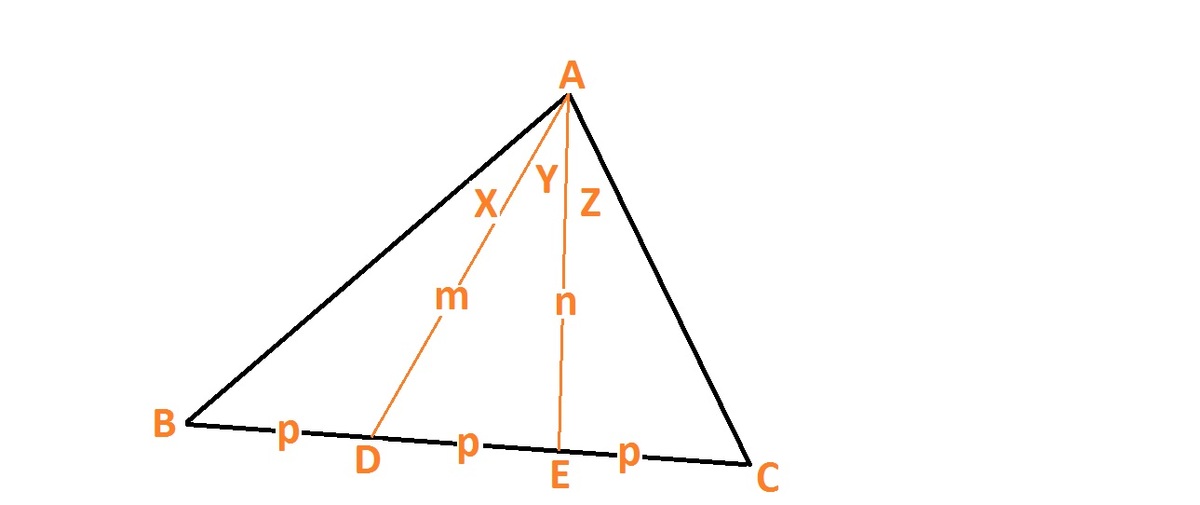Trigonometry! #11
Points D and E are taken on the side B C of Δ A B C such that B D = D E = E C . If ∠ B A D = x , ∠ D A E = y , ∠ E A C = z , then the value of sin x sin z sin ( x + y ) sin ( y + z ) is
This problem is part of the set Trigonometry .
The answer is 4.
This section requires Javascript.
You are seeing this because something didn't load right. We suggest you, (a) try
refreshing the page, (b) enabling javascript if it is disabled on your browser and,
finally, (c)
loading the
non-javascript version of this page
. We're sorry about the hassle.
2 solutions
 L
e
t
B
D
=
D
E
=
E
C
=
p
,
A
D
=
m
,
A
E
=
n
S
i
n
(
x
+
y
)
/
2
p
=
S
i
n
B
/
n
,
S
i
n
(
y
+
z
)
/
2
p
=
S
i
n
C
/
m
S
i
n
(
x
)
/
p
=
S
i
n
B
/
m
,
S
i
n
(
z
)
/
p
=
S
i
n
C
/
n
∴
S
i
n
(
x
)
∗
S
i
n
(
z
)
S
i
n
(
x
+
y
)
∗
S
i
n
(
y
+
z
)
=
p
∗
S
i
n
B
/
m
∗
p
∗
S
i
n
C
/
n
2
p
∗
S
i
n
B
/
n
∗
2
p
∗
S
i
n
C
/
m
=
4
L
e
t
B
D
=
D
E
=
E
C
=
p
,
A
D
=
m
,
A
E
=
n
S
i
n
(
x
+
y
)
/
2
p
=
S
i
n
B
/
n
,
S
i
n
(
y
+
z
)
/
2
p
=
S
i
n
C
/
m
S
i
n
(
x
)
/
p
=
S
i
n
B
/
m
,
S
i
n
(
z
)
/
p
=
S
i
n
C
/
n
∴
S
i
n
(
x
)
∗
S
i
n
(
z
)
S
i
n
(
x
+
y
)
∗
S
i
n
(
y
+
z
)
=
p
∗
S
i
n
B
/
m
∗
p
∗
S
i
n
C
/
n
2
p
∗
S
i
n
B
/
n
∗
2
p
∗
S
i
n
C
/
m
=
4
The most obvious way would be to use sine rule.. However I have another way .... Sin(x+y) can be written as 2 x (area of triangle ABE) / (AB X AE).
Substituting for all 4 ratios. The answer is then quite easy to get
You see the expression for area of triangle is eventually derived from sine rule. Nonetheless great creativity.